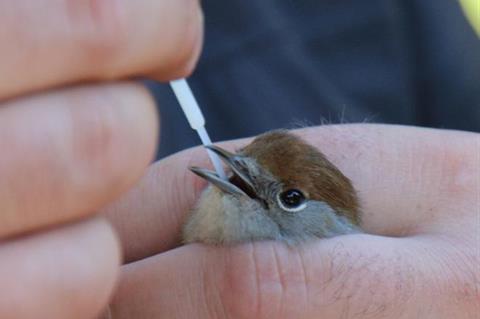The spread of West Nile virus in Europe is strongly linked to agricultural activities, urbanization, and bird migration, according to a modelling study published January 25, 2024 in the open-access journal PLOS Pathogens.

The study was carried out by Lu Lu from the University of Edinburgh, UK, and collaborators belonging to a large European collaborative consortium under the VEO (Versatile Emerging infectious disease Observatory) project.
West Nile virus outbreaks have occurred in birds (the natural hosts and reservoirs for the virus), livestock, and humans across Europe—however, the virus behaves differently in Europe compared to the US.
To better understand the evolution and spread of West Nile virus in Europe specifically, Dr Lu and colleagues used data gathered over the past twenty years from virus genomes and epidemiology studies as well as environmental surveys to generate a series of models that could simulate West Nile virus patterns across European geography.
Speed of spread
The authors found that one specific sub-lineage of the virus only found in Europe, WNV-2a, accounts for almost 75 percent of all European instances of the virus currently known, and has spread to 14 countries at least.
The speed and direction of WNV-2a’s spread was strongly correlated to agricultural activity, possibly because agricultural land use can degrade natural habitat for birds and force new migration patterns (potentially allowing the spread of West Nile virus to new areas), while simultaneously creating new aquatic habitat for mosquito breeding (the Culex mosquitoes are the primary carriers of the virus).
The direction of WNV-2a’s spread was also associated with urbanization, high coverage of wetlands, and migratory bird movements. The mosquito species and virus vector Culex pipiens is known to prefer urban environments due to the high availability of artificial aquatic habitats, fewer natural predators, and warmer ambient temperatures. Since birds often carry the virus, their movements also have the potential to spread it.
Gaps in data
The authors note that there were some significant gaps in available data from across Europe. The study points at a clear priority for enhanced surveillance in Central Europe, which may be a source for dissemination of West Nile virus across Europe. They also recommend stronger monitoring for West Nile virus in areas at high risk due to agriculture and/or bird habitat.
Prof. Marion Koopmans, coordinator of the VEO project, adds: “[Our study is a] call for collaborative risk surveillance efforts with countries in Central Europe, where WNV is most likely seeded. Enhanced monitoring should be targeted to areas where significant drivers of WNV spread overlap, particularly those with high agricultural intensity.”







No comments yet